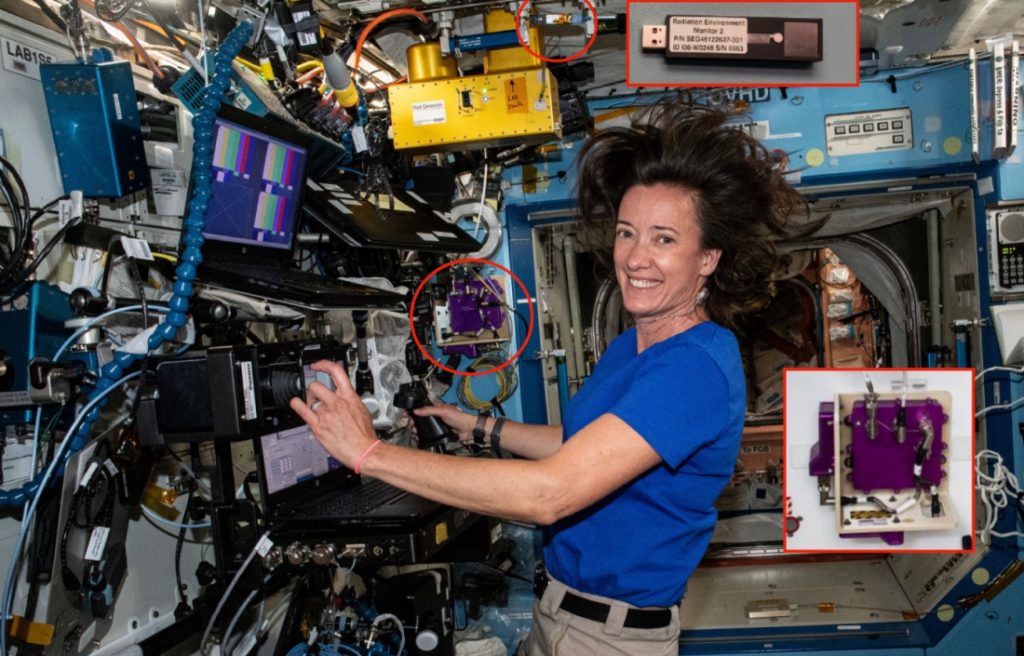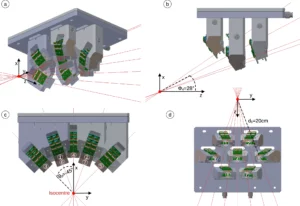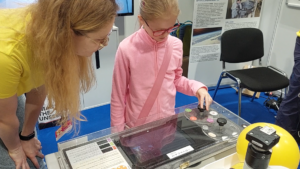major Aleš Svoboda on board the ISS – challenges, opportunities, context
ADVACAM was founded in 2013 as a spin-off of the Institute of Technical and Experimental Physics of the Czech Technical University. Since its foundation, this Czech company has been using and developing groundbreaking particle camera technology for radiation monitoring, originally developed for the needs of CERN, the European Organization for Nuclear Research. Our company innovates, designs and manufactures these particle cameras. We are currently the official supplier of radiation monitoring solutions for the US space agency NASA. We are also involved in a number of ESA projects. As a result, 14 of our devices are now routinely in service on board the International Space Station (ISS), making a major contribution to improving the safety of the human crew as well as protecting critical electronic equipment.
It is not only for these reasons that we see a number of opportunities and challenges for our company, for the Czech Republic and for the international community in major Aleš Svoboda’s potential journey. This is an unusual opportunity for a Czech astronaut to conduct professional and educational experiments with a Czech device in orbit and thus contribute to its further development or to the verification of its advanced functions.
Professional benefits and challenges
- The presence of a Czech astronaut means a unique opportunity to test advanced functions and principles of detectors that are not currently used by the ISS crew!
- The activities of the Czech astronaut may include a series of experiments using the latest generation of Czech particle detectors including:
- Validation of a key advanced feature for “space weather forecasting”
- Testing the ability to obtain information about the direction of incoming cosmic rays
- Verification of the effectiveness of existing shielding in individual ISS modules (radiation mapping)
- Tests of the optimum schedule of action to protect the crew and/or electronic equipment in case of emergency
- The Czech astronaut’s work will result in a strategy to protect the crew and equipment from the effects of space weather. This strategy is essential for future interplanetary flights where the effect of radiation is even more profound – outside the Earth’s magnetic field. This also applies to the return of humanity to the Moon – i.e. a significant international overlap of the Czech astronaut’s mission!
- The ISS is already equipped with our space-based particle imaging detector technology and it is frequently used on the station. It is well known to all stakeholders (NASA, ESA, etc.)
- It is a miniaturised device that does not require complex installation and is instantly ready for use. The Czech astronaut can use the existing equipment on board, but also bring additional particle cameras for his own experiments.
- The purpose of the device is to protect human crew and electronic equipment from the negative effects of cosmic radiation.
- “Solar storms” cause a sudden and huge increase in radiation that threatens the health and lives of the crew. At the same time, the storms affect the operation of electronic devices, which can result in their failure. The tested technology makes it possible to identify these events several minutes in advance, which is sufficient for taking steps to mitigate the impending damage (moving the crew to shielded areas, putting the electronic equipment on “stand-by”, etc.)
Educational programme for the public
- Radiation is all around us. On the Earth’s surface, we are protected by the Earth’s atmosphere and magnetic field, which act as a protective shield. In space, radiation is present in much larger quantities and in a much broader spectrum of different particles. Some of them have devastating effects on living organisms or complex electronic equipment.
- A promotional presentation can be made during the mission. During the presentation, it will be possible to directly compare the radiation detected in orbit with that detected at the exact same moment by people on the Earth’s surface. And all this in an easy-to-understand graphical form.
- Thanks to the existence of an educational version of the particle camera, which we distribute worldwide, students in schools, the media, people in hospitals, underground, underwater, in the mountains… can take part in this experiment. This will make it a citizen–scientist experiment that will result in valuable scientific data on the correlation of cosmic rays in orbit and on the Earth’s surface
- Student groups from all over the world are already using our MiniPIX EDU educational cameras. In hundreds of educational institutions.
Commercial context
- The Czech company is already supplying this technology to NASA and ESA, but they are only using a fraction of the potential. However, the Czech party was not able to conduct independent experiments. The parameters of the new generation have been multiply improved, the experiments will enable a significant shift in the commercialisation of the cutting-edge technology, for example, to facilitate its promotion in the commercial satellite segment.
- Particle camera technology has applications not only in space: medicine (radiotherapy, diagnostics), industry (non-destructive testing, radiation safety) …
Social overlap
- Increased prestige and self-confidence of the Czech Republic, the ability to offer a completely independent programme with benefits for the future of interplanetary flight.
- Increased motivation of Czech students to pursue technical disciplines with a global focus.
- A positive story unifying Czech society (pride, links with the traditions of the Czech industrial and scientific superpower…)



